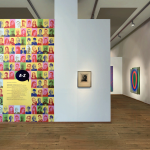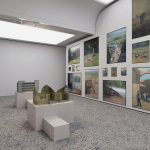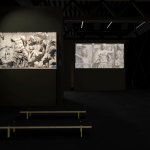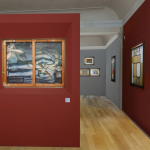“Jean-Michel Basquiat” was on view from 6 March to 14 May 2019 at The Brant Foundation, New York.
Jean-Michel Basquiat’s work continues to electrify the art world more than three decades after his death, and this comprehensive exhibition at The Brant Foundation Art Study Center in New York City offers a powerful reexamination of his revolutionary visual language. Curated by Dr. Dieter Buchhart, the show spans multiple floors to trace Basquiat’s meteoric rise from downtown graffiti writer to international art icon, revealing how his raw, text-laden canvases weaponized art history, pop culture, and social critique in ways that feel strikingly contemporary.
The exhibition’s thematic organization reveals Basquiat’s complex engagement with race, power, and identity through four key works that exemplify his artistic evolution and conceptual depth.
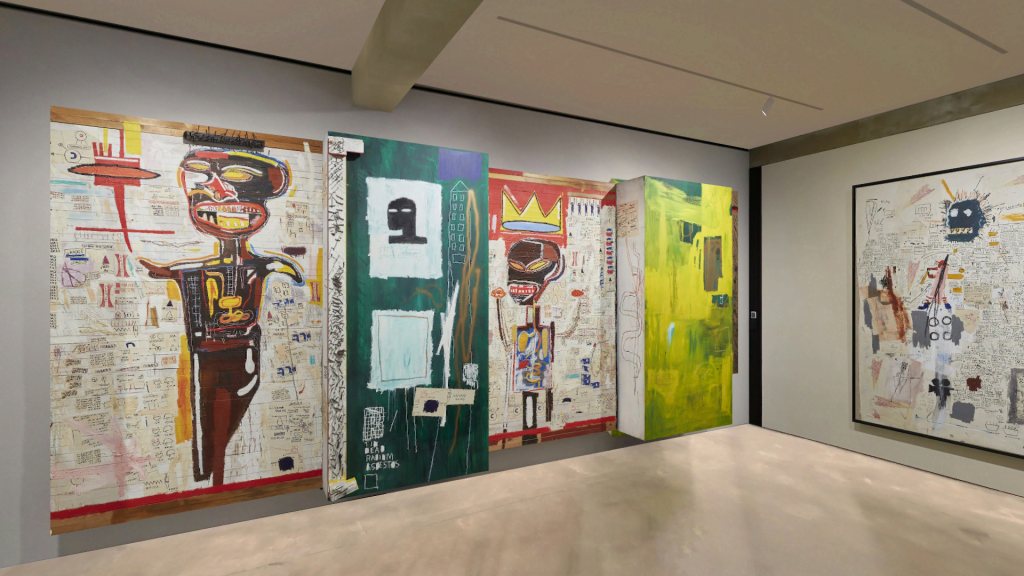
On the first floor of the “Jean-Michel Basquiat” exhibition, viewers are introduced to the foundational elements of Basquiat’s artistic evolution—from raw figuration and symbolic abstraction to his use of found materials and cultural storytelling. This floor highlights Basquiat’s deep engagement with identity, heritage, and social critique, often expressed through mixed-media works that blur the boundaries between painting, object-making, and assemblage.
Among the standout pieces is “Grillo” (1984), a powerful work that encapsulates Basquiat’s role as a modern-day griot—a storyteller and keeper of African and African-American memory.“Grillo” is composed of four nailed wooden panels, their rough-hewn surfaces bearing the unmistakable marks of Basquiat’s expressive hand. The nails protrude visibly, adding a tactile and confrontational edge to the visual experience. Central to the composition is a crowned figure rendered in Basquiat’s signature style: fragmented anatomy, bold outlines, and layered symbolism. The crown motif, recurring throughout his work, here takes on heightened significance as a symbol of ancestral pride and spiritual authority. The word “Grillo” , derived from “griot” , signals Basquiat’s deliberate connection to West African oral traditions and his self-appointed role as a cultural historian—recording the pain, resilience, and dignity of Black life through paint, paper, and wood.
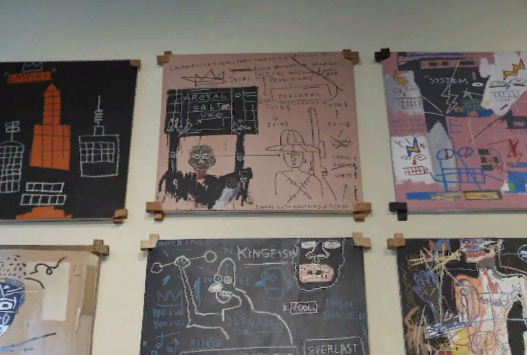
The second floor of the gallery is focusing on Basquiat’s interrogation of institutional power and colonial violence: here we find his incisive commentary on exploitation and erasure. In “Natives Carrying Some Guns, Bibles, Amorites on Safari” (1982) Basquiat weaponizes language itself, through words and phrases like ‘JOLLY GOOD MONEY IN SAVAGES’ and ‘TUSK$,’ substituting dollar signs for s’s to expose the economic motivations behind colonial domination. The artist’s systematic deletion of crowns – typically symbols of empowerment in his lexicon – above depictions of Black figures becomes a devastating visual argument about the theft of indigenous sovereignty. These works pulse with anger and irony, particularly when juxtaposed with repeated invocations of names like ‘CORTEZ,’ transforming historical references into accusatory chants against Western imperialism.
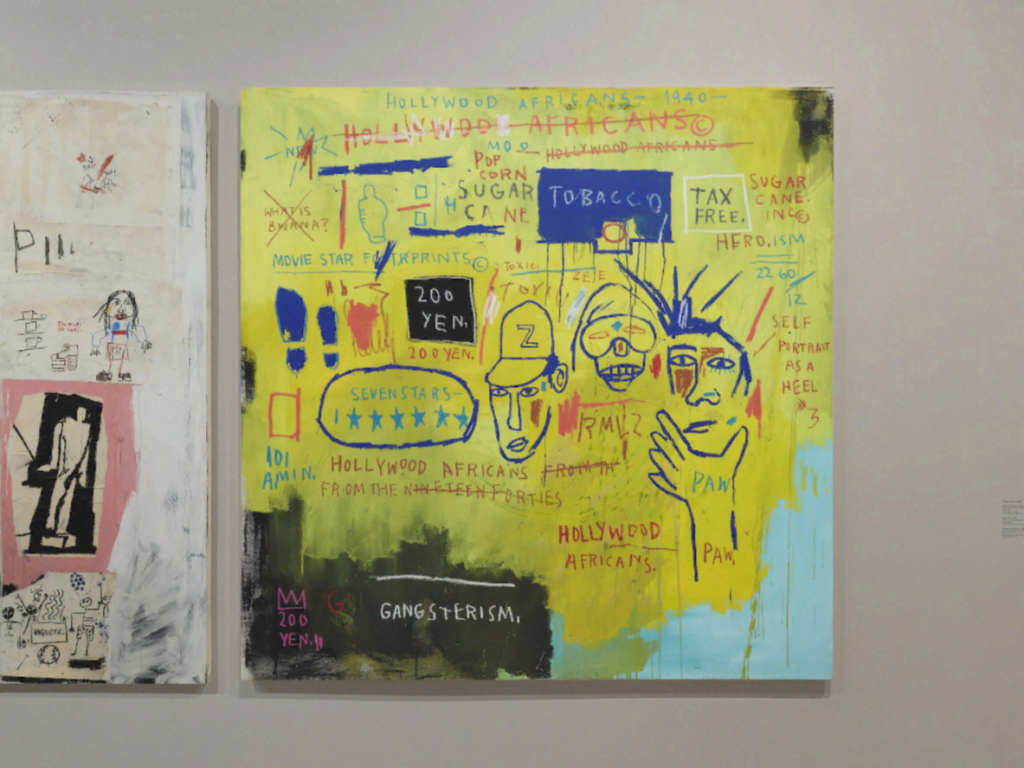
On the third floor of the exhibition sharpens its focus on the artist’s engagement with identity, cultural hybridity, and the raw energy of urban life—themes that pulse through works like “Hollywood Africans” (1983). This monumental painting captures Basquiat and his friends Toxic and Rammellzee as emblematic figures adrift in a golden field, surrounded by cryptic numbers and fragmented anatomical forms. The work distills Basquiat’s Neo-Expressionist force and his incisive commentary on race, displacement, and the myth of American opportunity. With its bold strokes, poetic layering of text and image, and deeply personal subject matter, “Hollywood Africans” embodies the message of “Jean-Michel Basquiat”: art as a confrontation with selfhood, society, and the systems that seek to define or destroy both.

The top floor unveils Basquiat’s deep connection to African diasporic traditions and spiritual iconography. In works featuring Vodou-inspired imagery and Day of the Dead references, Basquiat reclaims his Haitian heritage through skeletal figures adorned with three-pronged crowns symbolizing sacred authority. Paintings depicting flayed anatomies and fragmented skulls become meditations on mortality and memory, where medical diagrams collide with cultural symbolism. Particularly striking is how Basquiat transforms traditional African masks into modernist abstractions, creating a visual bridge between ancient rituals and contemporary urban experience.
Jean-Michel Basquiat anticipated the principle of our copy-paste society and literally signaled the coming madness of our allover communication in his art.
This exhibition positions Basquiat not merely as a brilliant painter but as a prophet of postmodern anxiety, whose chaotic canvases predicted our hyper-mediated reality. His dense layering of text, image, and cultural reference anticipated the digital age’s information overload while maintaining fierce commitments to social justice and Black cultural affirmation. As relevant today as during his brief lifetime, Jean-Michel Basquiat’s art remains a searing mirror held up to America’s contradictions – a visual manifesto of resistance, remembrance, and radical possibility.


